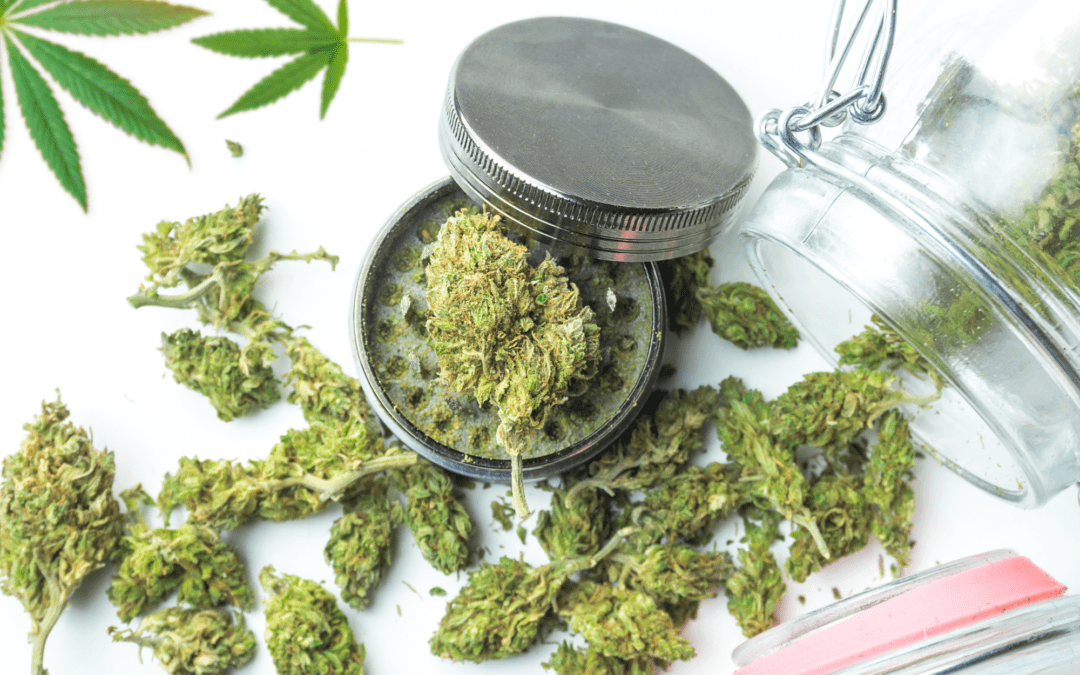THC and CBD, active compounds of marijuana, have been studied for their potential therapeutic effects on a variety of symptoms and chronic medical conditions. Although it may offer relief for some individuals, it is important to note that it should be used under the guidance of a medical professional considering its potential side effects and legal considerations. This being said, the use of medical marijuana can alleviate symptoms and conditions such as:
- Chronic Pain: Both THC and CBD have been studied for their analgesic (pain-relieving) properties. Marijuana may provide pain relief and lessen symptoms for individuals who suffer with chronic pain, neuropathic pain, and arthritis.
- Nausea and Vomiting: Marijuana, particularly THC, is also known for its antiemetic, or anti-nausea, effects. Medical marijuana is often prescribed to cancer patients undergoing chemotherapy to reduce treatment-induced nausea and vomiting.
- Muscle Spasms and Spasticity: Individuals who suffer with multiple sclerosis (MS) and spinal cord injuries utilize medical marijuana for its ability to reduce muscle spasms and spasticity.
- Appetite Stimulation: A unique attribute that medical marijuana has is its ability to stimulate appetite. THC can be used to address appetite loss in patients who are seeking treatment for conditions like cancer and HIV/AIDS.
- Anxiety: Some individuals report that marijuana helps relieve their anxiety, but the effects can vary. This is due to the fact that high doses of THC may amplify anxiety and offer the opposite effect depending on the person.
- Insomnia: Depending on the strain, dosage, and individual response, marijuana may be able to help those who struggle with sleep issues. It could potentially disrupt sleep patterns in some, but it has been known to help with insomnia.
- Epileptic Seizures: CBD, a non-psychoactive compound in marijuana, can potentially aid in reducing the frequency and severity of seizures. People who certain forms of epilepsy, such as Dravet syndrome and Lennox-Gastaut syndrome, have found relief in the use of medical marijuana.
- Inflammation: Both THC and CBD have anti-inflammatory properties, which may be beneficial for conditions involving chronic inflammation, such as inflammatory bowel disease (IBD) and rheumatoid arthritis.
- Post-Traumatic Stress Disorder (PTSD): Some research suggests that marijuana,
particularly strains with higher CBD content, may help alleviate symptoms of PTSD, including anxiety and nightmares. - Glaucoma: THC can temporarily reduce intraocular pressure, which is beneficial for individuals with glaucoma, but the effects are short-lived, and it’s not considered a primary treatment.
It’s essential to emphasize that marijuana’s effects can vary widely among individuals, and it may have both potential benefits and risks. Additionally, the legal status of marijuana varies by location, so it’s crucial to be aware of and adhere to local laws and regulations.
If you or someone you know is considering using marijuana for medical purposes, it’s advisable to consult with a healthcare professional who can provide personalized guidance based on the specific medical condition and individual factors.

